September 2024
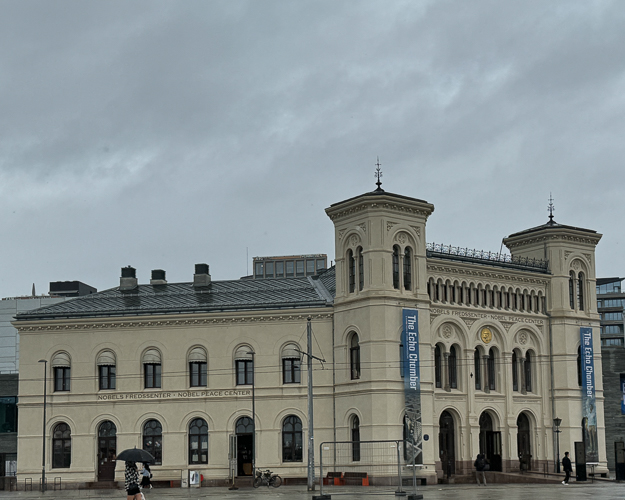
The Nobel Peace Center
The Nobel Peace Center building was purchased from Consul General Christophersen in 1903. The architects Carl and Jørgen Berner were commissioned to reconstruct it. Carl Berner designed much of the interior in the “art nouveau” style popular at the time, as opposed to the neo-classical design of the exterior. When the Nobel Committee members convene, they still sit around the table designed by Jørgen Berner in 1905. – The ceremonies are now held in the City Hall.
Oslo City Hall
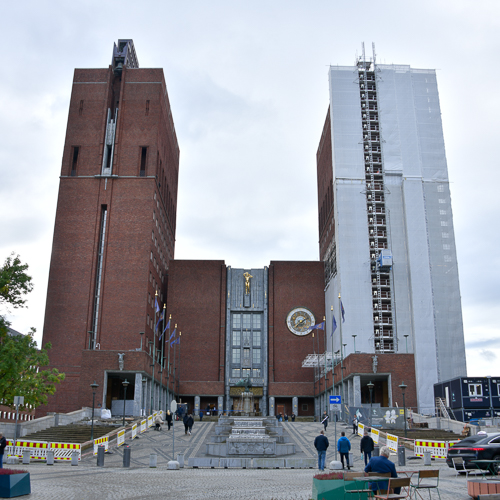
Oslo City Hall
Oslo City Hall was constructed between 1931 and 1950, with an interruption during the Second World War. It was designed by architects Arnstein Arneberg and Magnus Poulsson.
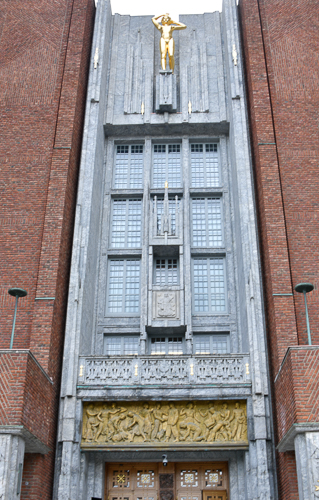
Joseph Grimeland designed the bronze relief over the entrance “Sea and land” (Sjø og land) and also the Oslopike (“Oslo girl”) high up on the wall.
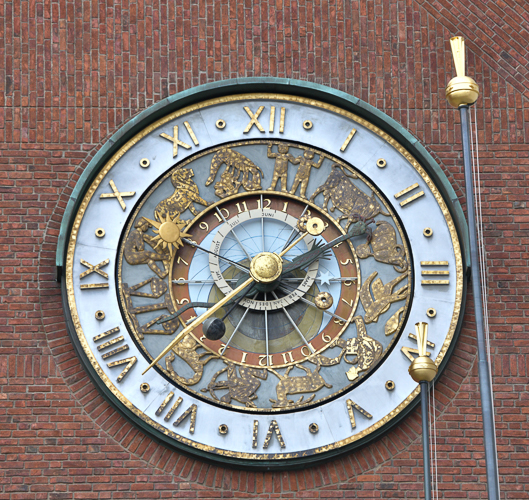
The intricate clock displays the time, month, and position of the moon and sun, plus the zodiac signs.
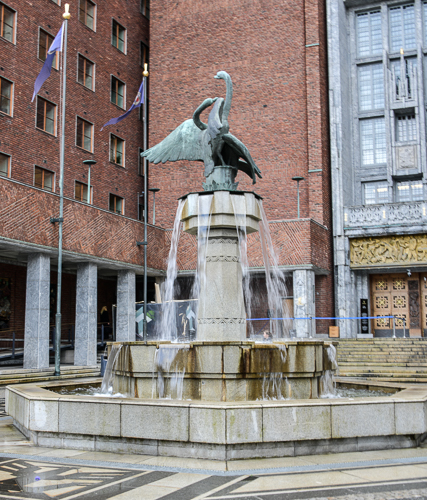
In the forecourt is a fountain with two bronze swans (Svanegruppe) by the sculptor Dyre Vaa.
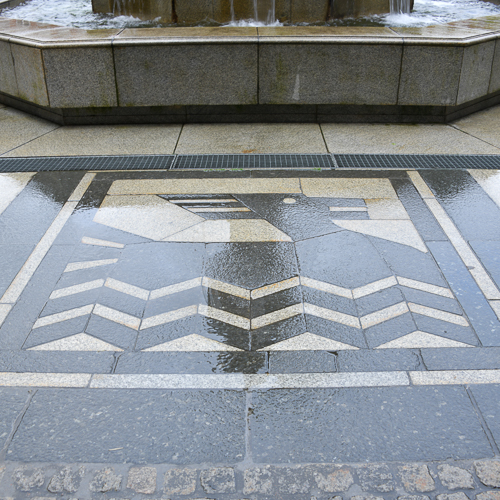
black and white marble designs encircle the fountain
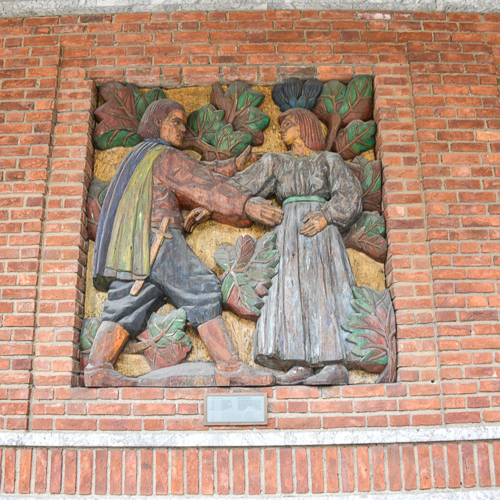
There are 16 wood reliefs by Dagfin Werenskiold face the square and are multicolored depictions of motifs from the Poetic Edda of Norse mythology concerning the life of gods and the stories of wisdom and love, war and hate, and visions of the future.
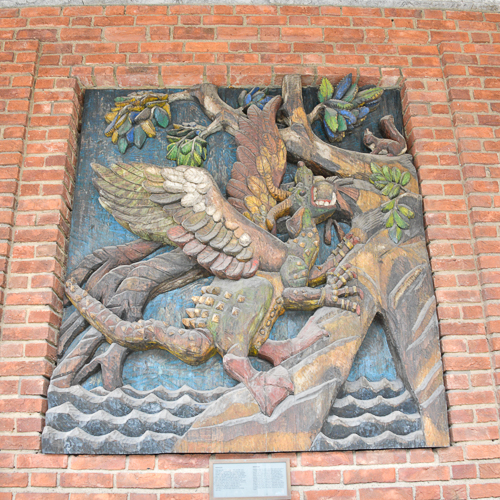
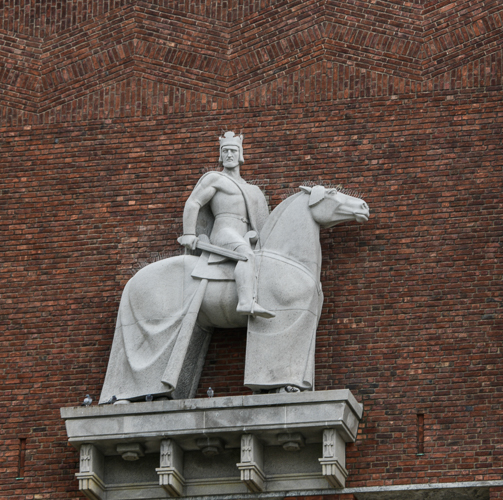
The western wall of the building is dominated by Anne Grimdalen’s sculpture of Harald Hardråde on horseback.
When you enter City Hall you do so in a giant room that is adorned with murals and a stunning marble floor. This room is where the Nobel Prize is awarded.
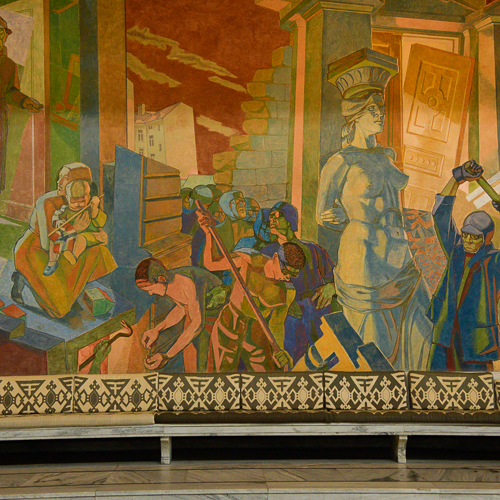
Shown in this mural are the struggles of the Norwegian people under the Nazi occupation.
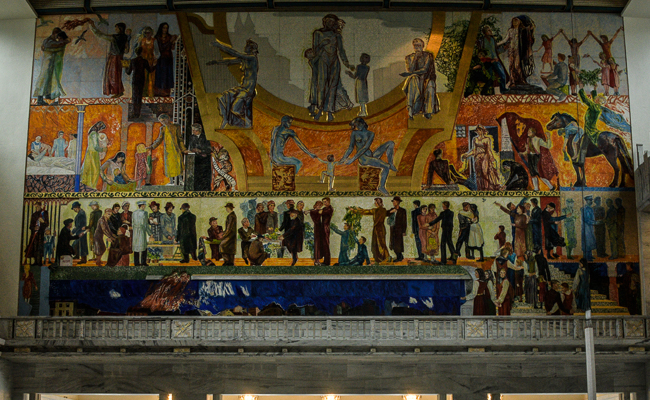
Titled “Administration and Festivity,” the murals in the Central Hall at Oslo City Hall depict scenes from Norwegian history and legends. Artist Henrik Sørensens painted these murals between 1938 and 1950. He included many images from World War II.
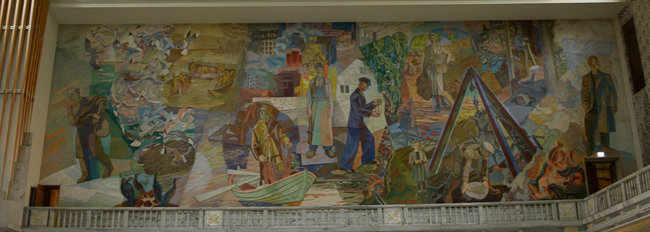
This mural is by Alf Rolfsen. It’s “A Picture of the Nation”, showing the main trades of Norway back in the 40s-50s. A fisherman, a farmer, a sailor and an industry worker. On the left side of the fresco you can spot the polar explorer Fridtjof Nansen, he represents the Nation seeking outwards. On the other side is the author Bjørnstjerne Bjørnson, representing the inwards spiritual journey.
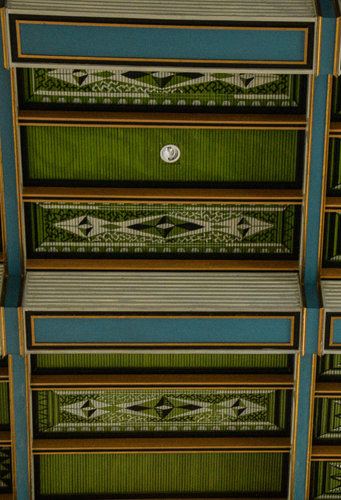
The ceiling of the great hall
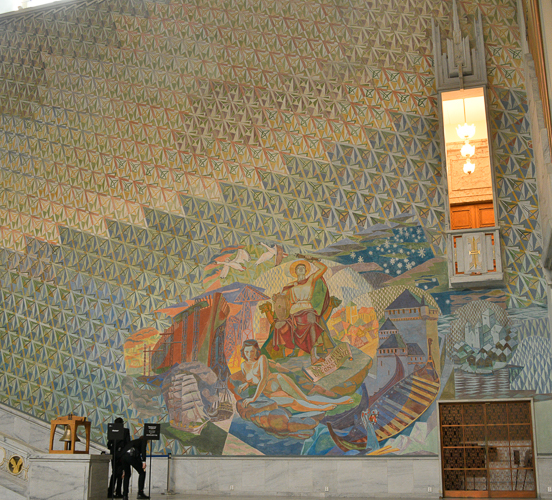
A depiction of Saint Hallvard.
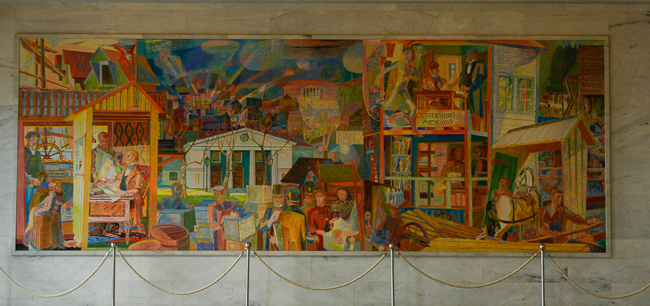
*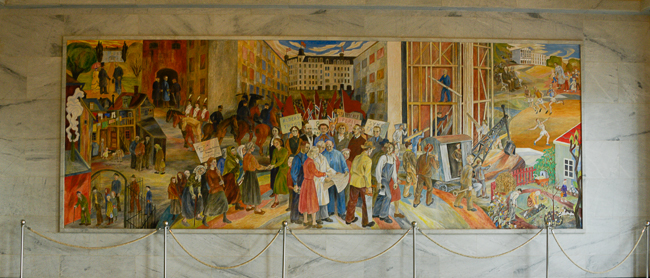
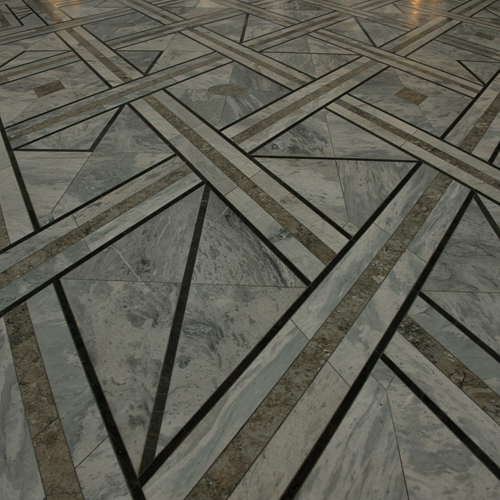
The marble floor
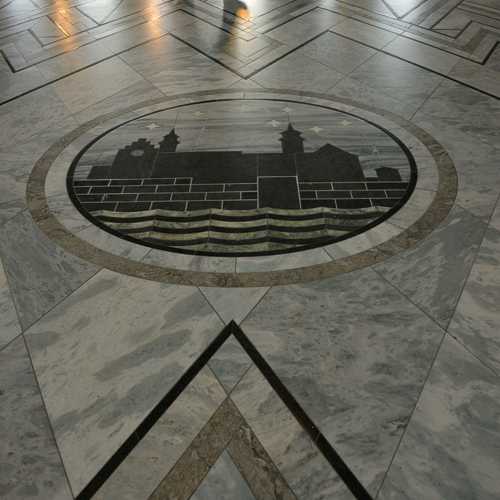
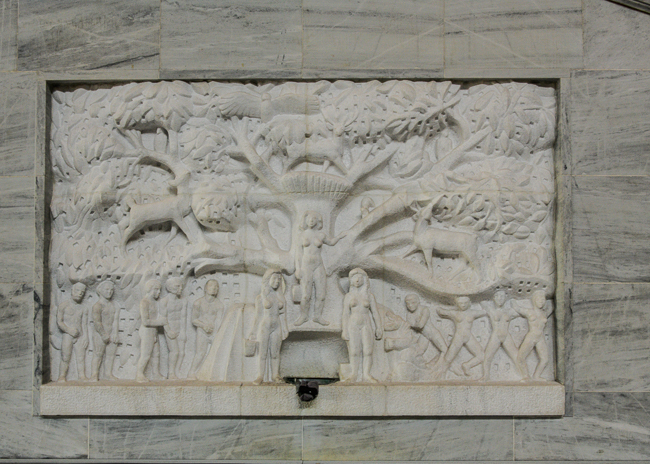
A marble plaque representing the tmedieval poem of the Poetic Edda that describes how the world might have come into shape and would end according to Norse mythology. According to this literary text, the beginning of the world was characterized by nothingness until the gods created the nine realms of Norse cosmology, somehow linked by the World Tree, Yggdrasil.
I didn’t have a photo that really showed the enormity of the room. This is from Norway with Pal, a great website about all things Oslo.

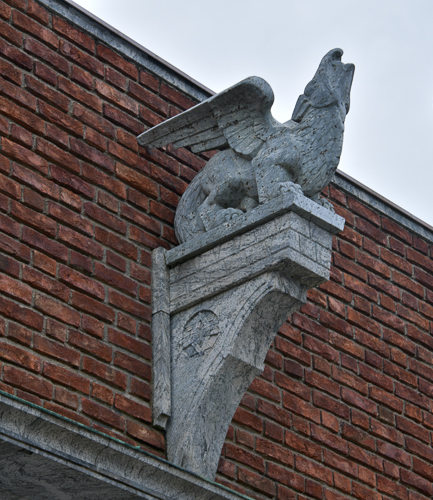
Two dragons on the exterior of the building I could find nothing about
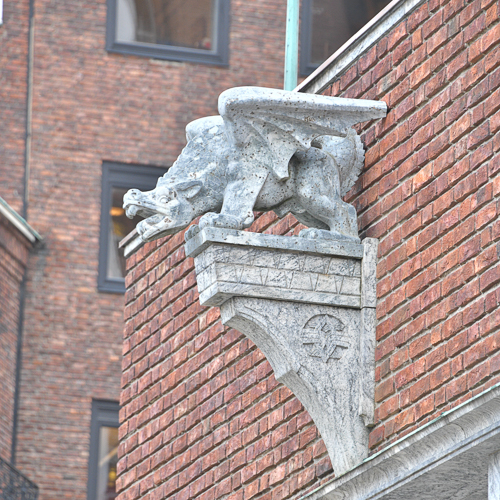
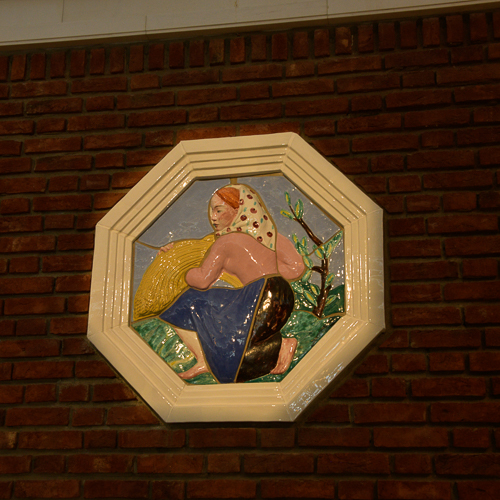
Inside the entry of Oslo City Hall
This is just a small sampling of the amazing artwork in Oslo City Hall. I must return someday and spend more time seeing the rest of the building.